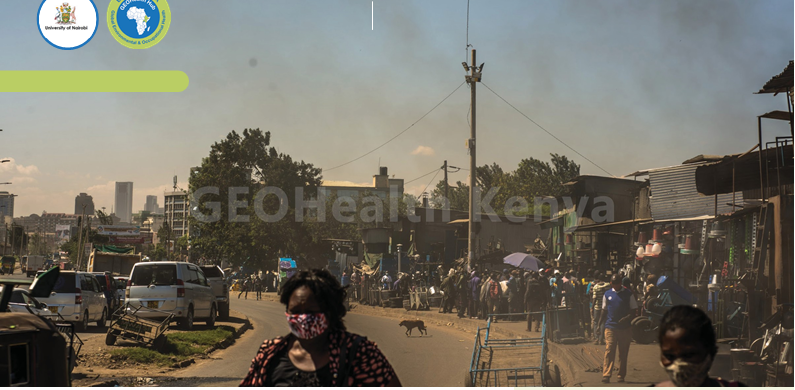Air Quality in Nairobi City: Reality Check!
Our study aimed at establishing factors influencing fine dust particle concentraions in Nairobi City and their impacts on lung health of school going children from long-term exposure. Here we report on the levels of the fine dust particles in 8 primary schools in Nairobi between August 2019 and September 2020. The particles were measured using air quality monitors (BAM 1022 and Nephelometers). We show that the daily pollutant levels intermittently exceeded the WHO recommended stan- dards and varied in distribution across the City. Human factors such as vehicular traf- fic, burning of solid wastes, and Industrial emissions appear to be major contributors of the pollutant, which declined in concen- tration during COVID-19 pandemic driven by partial lockdown of the city. Policy decisions targeting such emissions would reduce the exposure levels and mitigate health impacts of fine particle pollutants on children.
Introduction
Quality of air is an important determinant of public health for a city. In Nairobi City, this has been of particular concern due to vehicular, industrial, and solid waste burning emissions. Our study aimed at establishing long term exposure of school going children to the fine particulate matter (PM2.5) using high precision fine particles.
Approach
A time-series study design was used where daily (24-hour) average PM2.5 concentrations were recorded between 21 August 2019 and 30 September 2020 using the BAM-1022. A 12-month mean concentration was further obtained from 10 Nephelometers erected in primary schools spread in 8 city planning zones (Dagoretti, Embakasi (2), Kamukunji, Kasarani, Langata (2), Makadara, Stare- he and Westlands). Daily and long-term average concentrations were expressed as weight of the fine particles per cubic metre of air. The Inverse Distance Weight- ing interpolation technique was used to determine the pollutant spatial distribution in the city. These were compared with WHO guidelines of safe levels of ambient pollutant concentrations that are 25 µg/m3 (daily) and 10µg/m3 (long-term).
The 10-month average of pollutant concentrations was above WHO recommended standards of 10µg/m3 in 7 planning zones, but were at safe levels in large parts of the Langata planning zone (Figure 2).
Pollutant levels varied according location (Figures 2 & 3). There was a close correlation between pollutant levels and controllable human activities (traffic, garbage burning)
Recommendations
- Develop strategies for enhancing traffic flow throughout the city, e.g. removal of hand carts from major roads to reduce snarl-ups
- Improve on solid waste collection and disposal, e.g. dis- courage waste burning
- Incentivize firms to invest in green energy technologies including use of carbon filters in their chimneys
- Incentivize reduction in the use of private cars into the city, e.g. fast tracking the Bus Rapid Transit (BTR), light trains, etc.
- Incentivize non-motorized mobility types, e.g. provision of walkways and cycle lanes throughout the city
Key References
Alotaibi, R. et al. (2019) ‘Traffic-related air pollution and the burden of childhood asthma in the contiguous United States in 2000 and 2010’, Environment International. Elseqwevier, 127(March), pp. 858–867. doi: 10.1016/j.envint.2019.03.041.
Balakrishnan, K., Dey, S., Gupta, T., Dhaliwal, R. S., Brauer, M.,
Cohen, A. Dandona, L. (2019). The impact of air pollution on deaths, disease burden, and life expectancy across the states of India: The Global Burden of Disease Study 2017. The Lancet Planetary Health, 3(1), e26–e39. https://doi. org/10.1016/S2542-5196(18)30261-4
Burns, J. et al. (2020) ‘Interventions to reduce ambient air pollution and their effects on health: An abridged Cochrane systematic review’, Environment International, 135(Novem- ber). doi: 10.1016/j.envint.2019.105400.
Rajé, F., Tight, M. and Pope, F. D. (2018) ‘Traffic pollution: A search for solutions for a city like Nairobi’, Cities, 82(Novem- ber 2017), pp. 100–107. doi: 10.1016/j.cities.2018.05.008
CASELAP - University of Nairobi | Parklands Campu | P.O.Box 30197 Nairobi, Kenya Email: geohealthuon@gmail.com | www.geohealthhub.org
![]()

